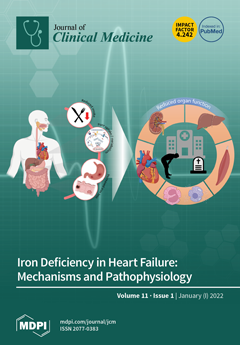A deeper insight into the mechanisms responsible for athlete performance that may serve as specific and detailed training indicators is still desired, because conventionally used biomarkers provide limited information about the adaptive processes that occur during exercise. The objective of our study was to assess insulin-like growth factor 1 receptors (
IGF1R) gene expression and evaluate plasma concentration of selected microRNAs (miRNAs) during a 10-week training period (sampling times: week 1, 4, 7, and 10) in a group of 12 professional female volleyball players. Circulating miRNAs (miR-223, miR-320a, and miR-486) with established concentration in plasma and documented association with the IGF1 signaling pathway, which is involved in muscle development and recovery, were tested. The levels of analyzed miRNAs, tested by one-way ANOVA, were significantly different between four training periods during a 10-week training cycle (miR-223
p < 0.0001, miR-320a
p = 0.00021, miR-486
p = 0.0037, respectively). The levels of
IGF1R also appeared to be different (
p = 0.00092), and their expression showed a trend to increase between the first and third periods. In the fourth period, the expression decreased, although it was higher compared with the baseline. Correlations between concentration levels of miR-223 and miR-320a (rs = 0.54,
p < 0.001), as well as between miR-320a and miR-486 (rs = 0.73,
p < 0.001) were also found. In the fourth period, a negative correlation between miR-223 plasma level and leucocyte
IGF1R expression was found (rs = −0.63,
p = 0.028). Multiple linear regression analysis showed that miR-320a (
p = 0.024) and creatine kinase (
p = 0.028) had the greatest impact on the expression levels of the
IGF1R gene. Future studies are required to define whether these miRNAs, especially miR-320a, as well as
IGF1R expression could be useful biomarkers of physiological changes during exercise and to discover their detailed biological roles in mode-specific exercise training adaptations of professional athletes.
Full article






